The article will walk you through the Top 29 Packing Tips For Moving to make your relocation an easy trip.
The most time-consuming and labor-intensive part of moving is packing. For most people, the dreaded packing effort begins many weeks before the intended move-out date and generally concludes on moving day.
Moving is difficult enough as it is, but packing up a whole house is next to impossible. In the face of an unfair battle with the impending house relocation, good packing suggestions can help.
Use the following 29 Moving and Packing Tips to speed up the entire process and make it much easier for you to manage the house packing operation from beginning to end.
1. Packing clothes for a long-distance move – Top 29 Packing Tips For Moving
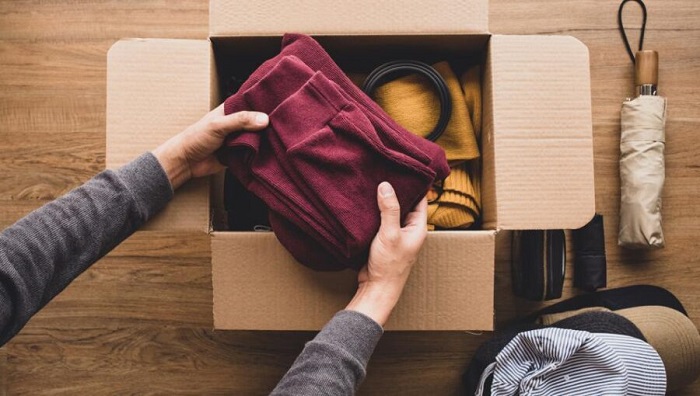
- The time has come to clean out your closet and get rid of any old clothes that you no longer wear or that are out of style.
- Don’t forget to PRE PACK out of season clothing that will not be needed for a while. Set aside what you’ll wear on Moving Day and put the garments you’ll need right away in your essentials boxes following the move.
- Pack your pricey formal clothing in wardrobe boxes so that they stay wrinkle-free during shipment. Leave your expensive formal clothes on their hangers.
- A clean trash bag can be used to speed up the process of packing your clothes by making a small hole in the middle of the bag, collecting numerous hanging items from the dresser or wardrobe, inserting the hanger hooks through the hole, and then sliding the bag down to cover the items.
- Large cardboard boxes pre-lined with soft packing paper should be used to store your casually folded clothing.
2. How to pack shoes for moving – Top 29 Packing Tips For Moving
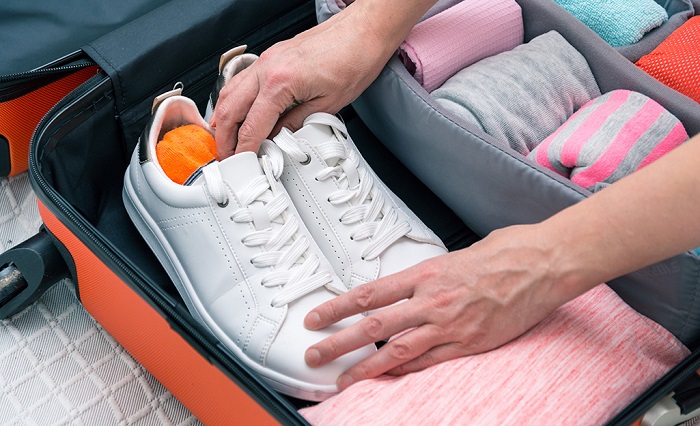
- Sort through your shoes and get rid of any that are damaged or worn beyond repair. Moving shoes that you won’t wear again is a waste of time.
- Clean your shoes before packing them since you don’t want to introduce any filth into your new home. Before putting the pairs in boxes, make sure they are totally dry.
- Fill your closed shoes with soft packing paper to ensure that they don’t get damaged during the moving process.
- The best way to store your shoes is in their original shoe boxes or sturdy boxes of a similar size, which you should do after wrapping them in paper and letting them air dry.
3. How to pack books for moving
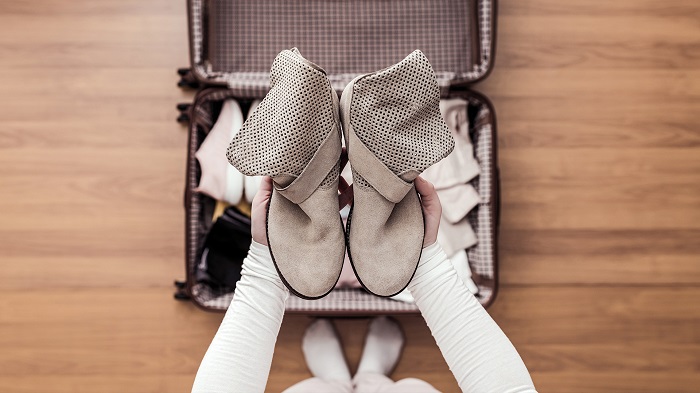
- Keep in mind that books are heavy when packed together in boxes, so optimize your book collection. If you don’t plan on reading a book again shortly, give or donate it.
- Make sure your books are packed in sturdy, dry, and damage-free boxes. Book boxes should be double-taped at the bottoms for extra security, and each book-filled box should weigh no more than 40 pounds.
- Flat, UPRIGHT, and SPINES DOWN are three ways to pack books in robust boxes. The spines of your books will be permanently damaged if you put them in a stack with the spines facing you.
- Rolling suitcases are ideal for storing heavy books like encyclopedias, dictionaries, and special hardback versions. Packing paper can be used to keep the heavy volumes in place in case if they’re moving around.
4. How to pack dishes for a move
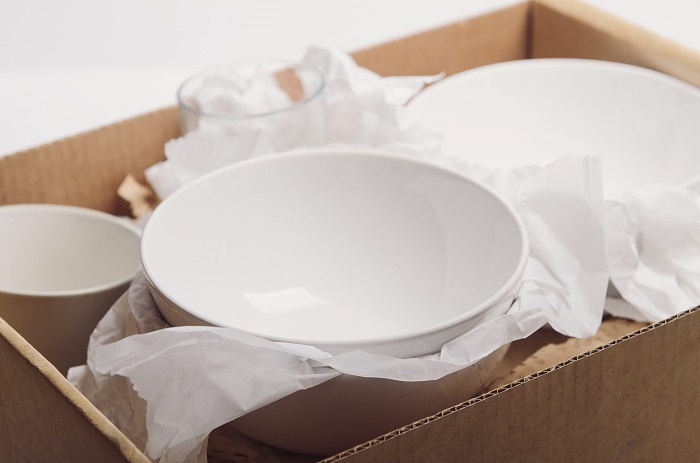
- Pack your delicate cooking utensils in dish packs, which are double-walled cardboard boxes. Use crumpled paper as a soft padding layer in each box.
- Pull two sheets of packing paper from one corner over a plate and do the same thing with the other three corners, making sure to completely cover the delicate silverware piece. Tape the bundle of papers together.
- Dishes should be placed on their sides in the dish pack, not flat in the boxes, to avoid damage to the plates.
5. How to pack a television for a move.
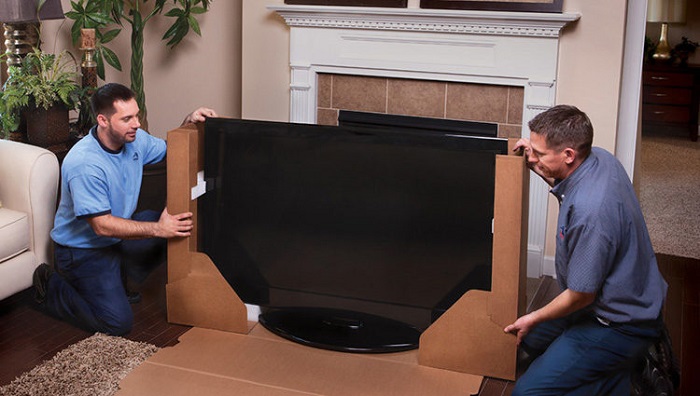
- The way your TV is linked up to any external components, such as game consoles, sound systems, and Blu-ray players, should be photographed. For those who are moving and need to wire up their TV, this will save a lot of time.
- Using painter’s tape, connect a huge sheet of cardboard that’s somewhat larger than the TV screen’s dimensions to the TV’s housing to protect the screen. During transportation, the ultra-sensitive screen will be safeguarded by the robust shell.
- Use thick furniture blankets to thoroughly encase your television and secure them with tape.
- If you still have the original TV box, use it. A robust exterior shell for your flat-screen TV can be created by placing a large cardboard sheet on the back and a smaller one on top of it, then taping them together.
6. How to pack a computer for moving
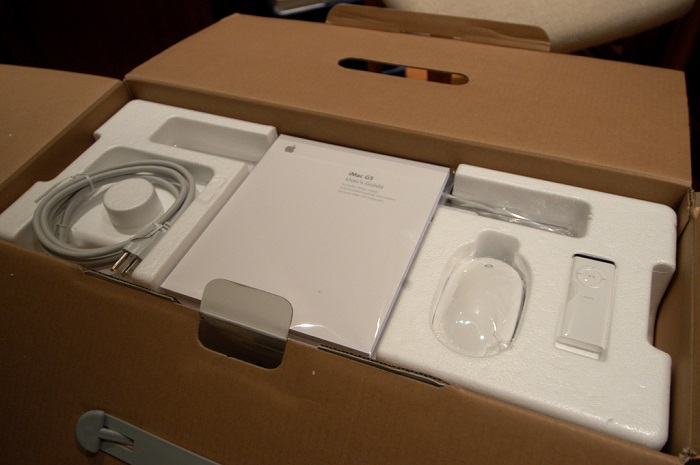
- Before you move your computer, make a copy of your vital data on the hard drive (SSD drive). Use an external hard drive or cloud storage to store the most important data.
- Take a photo of the rear of the computer mid-wiring towers before disconnecting all of the cords coming into or going out of it. If necessary, give the cables a name.
- Packing paper and bubble wrap should be used to protect the mid-tower. Use a computer shipping box that is somewhat larger than the PC itself to package the PC bundle.
- Use soft packing paper to wrap all of your computer peripherals (keyboard, mouse, and speakers) before putting them in a PC accessories box with the wires.
7. When relocating, how should I pack my electronics?
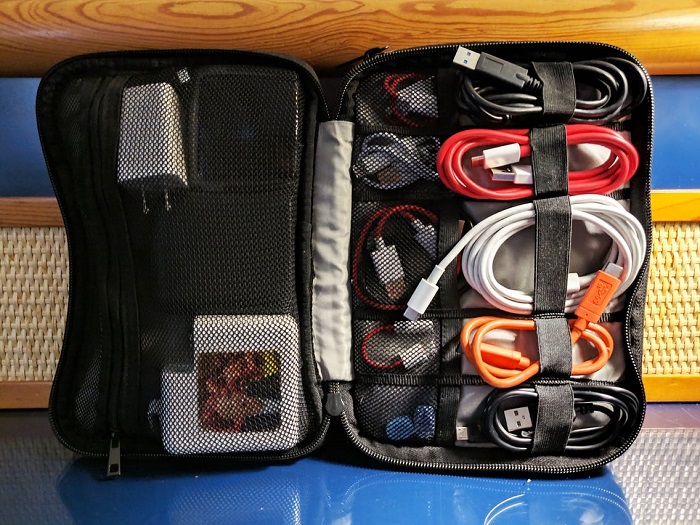
- Before unplugging your electronic equipment, organize and label their cables. Quickly snap a picture of the way your electronics are set up if you’re in a pinch.
- If you have a hard disk or SSD drive that contains essential data, make sure to back it up before discarding any replaceable batteries, toners, and cartridges.
- When it comes to protecting your electronic devices, wrap them in soft, ink-free packing paper as the first layer of defense. To protect your delicate electronic equipment from static electricity, apply a second layer of bubble wrap, preferably anti-static bubble wrap.
8. How to pack glasses for moving
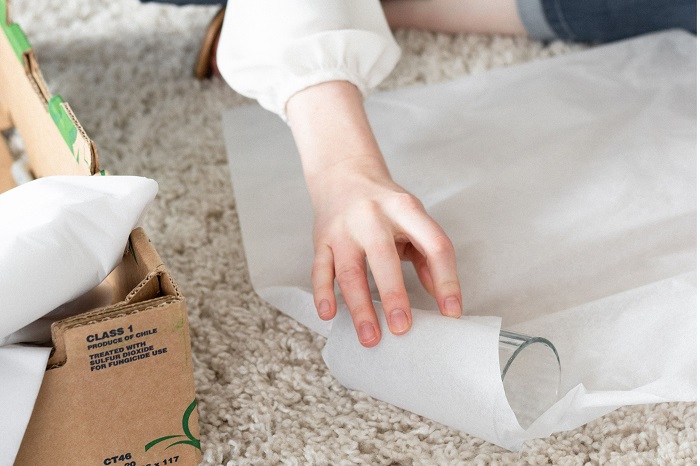
- CONSTRUCT PROTECTION for your breakable glasses by double-taping the bottoms of the boxes you plan to use and stuffing them with crumpled paper.
- Two sheets of soft white and acid-free packing paper should be used to wrap each glass fully around it. Tape each bundle of papers together with a piece of tape.
- After bubble-wrapping the stem of a wine glass, fill the rest of the cup with packing paper and then wrap it like a normal drinking glass.
- Assemble the glasses in pre-lined boxes with their holes facing down and place them upright. To avoid any movement, fill in all of the spaces with paper.
9. Packing Large Mirrors and Pictures
- Tape off a giant X over the glass surface of the framed painting or large mirror. For this reason, it’s a good idea to take a few extra precautions before shipping.
- Using painter’s tape, attach a piece of thick cardboard to the frame of the picture or mirror and secure it in place with the cardboard.
- Protect your costly framed pieces by wrapping them in bubble wrap and placing them in an appropriate picture and mirror box.
10. To pack jewelry for a move, here are some tips
- At all times, keep your valuable and expensive jewelry on you. The best approach to pack jewelry for a move is to put it in a jewelry box and organize it meticulously.
- COLLECT and store linked jewelry in empty toilet paper rolls for larger items with longer chains or put the chains through straws and secure them with a clasp to prevent them from tangling in transit. Wrap the package with packing paper carefully.
- Using credit card-sized cardboard cut-outs, make a few holes in the cards, insert the hooks, and wrap the earrings in plastic wrap. A pill organizer or Ziploc bag can be used to keep your stud earrings safe.
- To keep your rings safe, wrap them in soft packing paper before putting them in a hard eyeglasses case, an egg carton, or a pill organizer.
11. Packing lamps for a move
- To remove the lampshade, begin by removing the finial, light bulb, and harp screws (the U-shaped metal piece). Set the finial and harp aside for shipment in the same lamp box after they’ve been wrapped in soft wrapping paper.
- Use a cable tie or a rubber band to secure the lamp cord. Wrap the lamp’s base in wrapping paper, then add a layer of bubble wrap to protect it from damage. Wrap the lamp base and place it in a pre-padded shipping container of the correct dimensions.
- Remove any dust from the lampshade before wrapping it in packing paper (never use newsprint). Add crumpled paper for added cushioning to the lampshade before packing it in a separate moving box.
12. How to pack your children’s toys
- As a first step, go through all of your children’s toys and get rid of any that are no longer in use or have been outgrown. To make another child happy, please donate any toys you no longer need.
- Soft toys should be cleaned of dust and battery-operated ones should be taken out of their plastic bags to preserve them from moisture, dust, and insects.
- In their original boxes, put board games, construction sets, and jigsaw puzzles. As a precaution, it’s preferable to dismantle any ready-to-assemble construction sets, model sets, or puzzles before transporting them.
13. Packing a bed for transport
- Consider carefully whether or not it makes sense to transfer your bed in the first place. You’ll have to pay a lot of money to move a king- or queen-sized bed because they are so large and heavy.
- Make it easier to transfer your bed by dismantling it into its main components. To begin, take off the headboard and box spring by unscrewing the screws that hold them to the mainframe (if applicable).
- Take out any storage drawers if the bed frame has them, empty them, and segregate their contents to make the bed lighter and easier to move.
- Keep small fastening components like bolts, nuts, and screws in plastic bags to avoid losing them.
- Wrap the large bed parts you’ve dismantled in thick furniture blankets and secure them with tape before storing them.
14. How to pack a mattress for transport
- When moving into a new house, make sure that your mattress is worth the time, effort, and money it will take to transport it. Mattresses should be replaced every seven to ten years, according to experts.
- BUY a mattress bag that is constructed of plastic that is long-lasting. Dust, filth, and dampness can ruin your pricey mattress if you don’t have a mattress protector in place.
- Use high-quality tape to secure any air that may have been trapped inside your mattress bag before you place it on your mattress.
15. How to pack bedding and linens?
- Finally, bring blankets and pillows because they are easy enough to pack and some of these soft things can be utilized to cover delicate items within boxes.
- Stack your bed linens in huge cardboard boxes and press down on them as you arrange them so that the air trapped between the fabric layers can be released.
- Make use of vacuum bags to minimize the volume of the most voluminous bedding and linens (comforters, duvets, quilts, etc.) and conserve precious storage space.
16. How should a couch be packed
- The couch’s legs should be removed if at all possible due to their prominence. This will considerably reduce the risk of damage when you remove the piece from your home. Pull apart the couch in a safe manner and remove the rest of its components.
- It’s best to BUBBLE WRAP sofa bits that you haven’t removed, especially delicate items like ornaments. Secure the metal mechanism of a recliner sofa with a strap or a piece of rope before transporting it to prevent it from opening accidentally.
- Tape the pads to the couch using furniture sheets for further protection.
17. How to pack a dresser for moving
- Empty the drawers of the dresser to lighten the whole piece of furniture. Remove everything from them, including clothes, towels, sheets, and blankets, and pack them in large moving boxes. Painter’s tape can be used to secure the drawers.
- Remove everything from the top of the dresser and place it in a container. To ensure the best safety for your dresser mirror, carefully remove it from the dresser and wrap it in furniture blankets.
- Use ordinary packing tape to secure three to four heavy-moving blankets around the dresser. Use caution when applying the tape on furniture in your bedroom, as it could damage the finish.
18. The best way to pack a china cabinet
- It’s best to wrap each delicate object in many sheets of soft packing paper before putting it in the china cabinet. Use packing tape to seal each bundle of papers.
- The china cabinet pieces that are exceptionally costly or perhaps priceless should be wrapped in bubble wrap for further protection. Fill any empty spaces in the cardboard box with enough crumpled paper to keep the delicate pieces from shifting during transport.
- Wrap the china cabinet’s glass shelves and doors in heavy furniture blankets before storing them away. Finally, protect the furniture’s beautiful finish by wrapping it in multiple moving blankets.
19. Packing a desk for a move
- Empty the desk drawers, disengage all removable trays (if applicable), and remove the glass top to make your desk as tiny and lightweight as feasible (if any). If you have a large L-shaped desk, divide it into two halves.
- FEEL FREE to leave any little and light items in the desk drawers because they won’t affect the weight greatly. Wrap the open areas of drawers with the stretch wrap for the contents to be contained.
- PUT A MOVING BLANKET AROUND THE WHOLE DESK FOR PROTECTION. Do not leave any workstation areas unprotected to avoid accidental harm.
20. How to move a dining room table and chairs?
- To remove the table’s legs, first, remove the glass or marble top, then remove the legs by unbolting or unscrewing the table’s primary framework.
- The legs of the table should be wrapped in bubble wrap to prevent them from damage. Place four folded pieces of cardboard around the table’s corners and tape them in place. Wrap the tabletop in heavy-moving blankets and fasten the pads with packing tape before going on to the next step.
- The legs of the chair should be taken apart and wrapped in bubble wrap. Moving blankets should first be wrapped over the legs of each dining room chair, and then padded cushions should be placed on top of them. Tape the package together to keep it safe.
21. The best way to move antique furniture
- Any antique furniture you own should be handled by experts who know exactly what it takes to safeguard extremely precious and fragile items of furniture.
- Three layers of protection should be applied to your antique furniture to ensure its long-term viability: First, extra-soft packing paper; second, thick moving blankets; and, third, custom-made crates for rare antique furniture pieces serve as shock absorbents during the moving process.
- The best way to protect fragile furniture items like decorations is to place cardboard cut-outs over them and fix them with painter’s tape.
22. Packing tools for a move
- This includes everything from screwdrivers and hammers to pliers to files and various types of hand saws. Make sure you have a designated toolbox for your hand tools so you can get the job done well the first time around.
- Maintain the original packaging for all small and medium power tools. Otherwise, look for sturdy cardboard boxes of the same dimensions. Make sure to remove all removable parts (attachments), including the batteries, and swivel the cord around the tool before packaging it.
- WASH and DISINFECT your garden tools before bundling them together according to size. Use old blankets as wrapping material and seal the bundle with sturdy packing tape.
23. How to pack your kitchen appliances for a relocation.
- Make sure your small kitchen equipment like coffee makers and toasters, stand mixers, blenders, air fryers, and food processors are clean before moving them. Before you begin packing up your appliances, make sure they are completely dry.
- Be sure to remove any removable pieces from the appliances and secure the electric cables before putting them into their original boxes or pre-lined cardboard boxes of a similar size.
- Put a soft furniture blanket on the appliance dolly before filling it up with large kitchen appliances such as refrigerators, cooking stoves, and dishwashers. Attach the blankets to the appliances with packing tape. It is important to keep their electric wires coiled and taped on their backs rather than dangling loosely and posing a hazard.
24. How to pack area rugs for moving
- Remove all dust, dirt, hairs, and debris from the small area rug with a vacuum cleaner, then flip the rug over so that the rug pile faces the floor, then look for the direction of the fibers (also known as the nap), and then slowly roll the rug against the grain.
- Assemble your roll of the carpet by wrapping it in Kraft paper and taping it shut at both ends with a long piece of twine.
- Avoid putting your area rugs in plastic coverings, as this could lead to the growth of mold and mildew if the rug fibers are unable to breathe.
25. How to pack bathroom items for moving
- Take an inventory of your toiletry and hair care products, as well as your medicine cabinet and other household goods, and get rid of everything you don’t use or don’t want in the bathroom.
- Toss out any prescriptions that have expired, are missing or illegible labels, have changed properties, or are no longer needed.
- Empty bottles with liquids still inside should be packed carefully. A little piece of the plastic wrap should be placed over the opening of a half-full bottle before securing its lid. Using zippered plastic bags, place these bathroom necessities.
26. The best way to move a grandfather clock
- To ensure that your grandfather clock arrives at your new house in one piece, dismantle it. A pendulum clock’s components should be safeguarded, such as its cables and weights, as well as its guide and chime rods, glass shelves, and wooden ornaments, all of which should be removed and labeled.
- SECURE the pendulum and weights by first wrapping them with soft packing paper, then furniture blankets, and last with tape. Make sure each weight is packed in its container to avoid damage.
- AVOID breaking your grandfather clock’s frontal glass panels by taping cardboard cutouts to the glass and fastening the cardboard with masking tape.
- Put furniture covers on all surfaces and parts of the grandfather clock, including the pendulum, to keep it safe.
>> Related Articles: TOP 9 TIPS TO PACK FRAGILE ITEMS FOR MOVING
27. How to transport a pool table safely
- Make sure your pool table is dismantled correctly so that it may be transported safely. Remove the slates by removing the table frame and legs, unfastening the pockets, disengaging the rails, removing the felt, and removing the slates.
- A medium-sized moving box should be used to pack all of the pool table accessories including the pockets, balls, triangle, and other items.
- Slate, rail, leg, and frame elements should all be covered with furniture coverings to keep them safe from damage. Use a lot of packing tape to seal the bundles of padding. If you don’t have a case for your pool cue, put it in a moving blanket.
>> Related Articles: TOP 10 TIPS TO MOVE BY YOURSELF
28. Packing plants for a move
- Preparation is key when it comes to moving potted plants. The bottoms of the boxes should be reinforced with packing tape so that your plants may breathe during the move.
- Add another layer of dry packing paper to the clay pots and tape them together. Only use dry paper to wrap plastic pots.
- Create protective sheets of strong brown paper (Kraft paper) that are the same height as the potted plant. Then, cover the plants with paper sleeves and tape them to their pots. Additional safety can be provided by twine or support stakes wrapped around the foliage of tall plants.
- INTERMEDIATELY PLACE crumbled paper between the pots to prevent any unwanted touch.
>> Related Articles: TOP 12 THINGS TO PREPARE BEFORE MOVING INTO A NEW HOUSE
29. Packing a vehicle for a move
- When loading your car, avoid using cardboard boxes. The back of a truck, for example, can stack cartons, but not in a car’s tiny cabin.
- PACK soft, non-breakable items in plastic bags that can fit practically anywhere in the car – even in tight areas – and serve as cushions to protect other things as well. They can be squeezed inside tight spots and can be used as cushions to protect other things.
- Use the space under the front seats, the spare tire well, and any available footwells to keep your car clean.
- For your convenience, you might want to invest in a car overhead cargo carrier. A high-quality overhead carrier will cost you more money, but you should consider it a long-term investment.
>> Related Articles: TOP 10 BEST MOVING TRUCK RENTAL IN TORONTO



